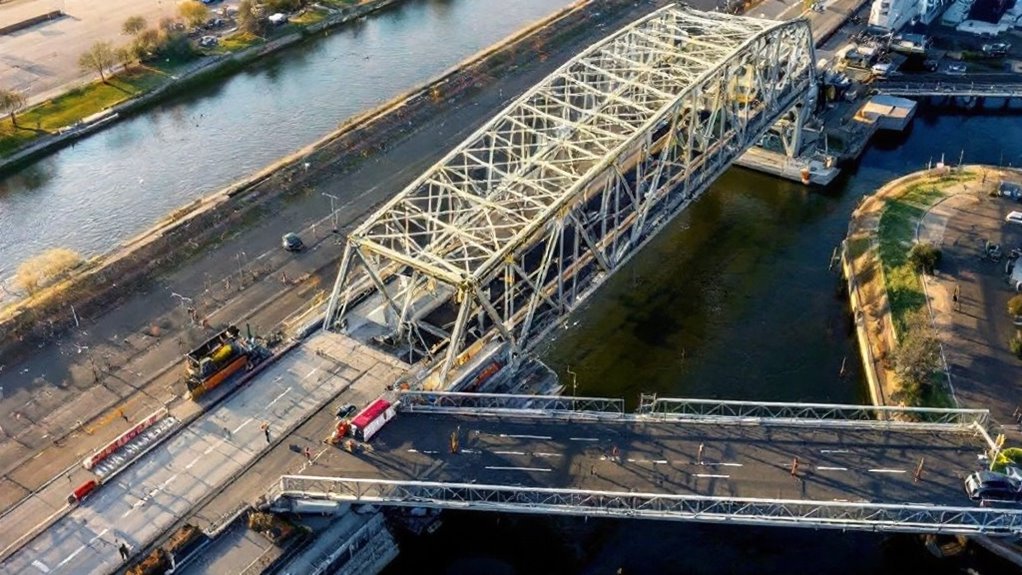Commuters in St. Catharines are facing detours as the Glendale Bridge over the Welland Canal remains in its raised position. The Parker through truss bridge, known as Bridge #5, has been prioritizing marine traffic since 21:19 UTC. Officials confirm the bridge will be out of service for two weeks.
The vertical lift bridge features nine riveted panels with distinctive v-lacing on its verticals and lattice on the top chord. Its cantilevered pedestrian sidewalks with ornate scrollwork guardrails are a notable design element. The bridge is now remotely operated via cameras and centralized control systems.
“The east portal tower bracing needed replacement after recent collision damage,” said a canal authority spokesperson. Clearance signage has been installed to prevent future structural strikes. The bridge maintains most of its original riveted connections, reflecting early 20th-century aesthetics and engineering practices.
Vehicular traffic has been halted while the bridge remains in its raised position. Pedestrian access continues via the cantilevered walkways. Waze navigation is providing detours for drivers, as marine navigation takes priority during this outage.
The Glendale Bridge was constructed as part of the Welland Canal’s infrastructure network. Its A-frame tower bracing reinforces the lift mechanism that accommodates ship clearance requirements. The lattice guardrails enhance pedestrian safety while posted clearances minimize collision risks. The bridge lacks vehicle guardrails and uses only curbs to separate traffic from the edge.
Local businesses are adjusting to altered traffic patterns. The remote operation system reduces the need for on-site personnel and provides real-time status updates via canal monitoring systems. This technology represents a shift from the bridge’s original manual operation.
The canal authority has implemented redundant systems to guarantee operational reliability. Despite the inconvenience to land transportation, the canal’s role in regional commerce remains critical. The heritage preservation of these structures balances modernization needs while maintaining historical authenticity.
Updates on the bridge’s status are available through the canal’s monitoring systems. Commuters are advised to plan alternate routes until repairs are completed.
Maintaining vital infrastructure is key to balancing modern transportation needs with heritage preservation. While temporary disruptions are unavoidable, long-term improvements will strengthen regional connectivity. Follow the latest infrastructure news and regional updates at Marketplace Niagara.








